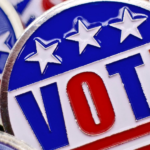Just In | The Hill
The recent rise in Medicaid enrollment is one of the most remarkable expansions of a welfare program in U.S. history. Because of reckless government policies, 90.9 million Americans are now enrolled in Medicaid or the Children’s Health Insurance Program (CHIP). That’s an increase of more than 20 million compared to February 2020, just before the COVID-19 pandemic emerged as a significant public health problem in the United States.
However, despite these eye-popping numbers, few, if any, politicians in Washington seem concerned about the massive cost to taxpayers caused by this expansion or the long-term problems it will create. And because the mainstream press has largely ignored the issue, most Americans have no idea it’s even happening.
The rise in Medicaid enrollment has its roots in the Families First Coronavirus Response Act (FFCRA), which was passed by Congress and signed into law by President Trump in March 2020. Congress created FFCRA as a direct reaction to a rapid increase in COVID-19 cases and coronavirus-related economic lockdowns imposed by state and local governments that occurred early in 2020.
Under the FFCRA, states were provided with additional federal funds meant to help combat the effects of the pandemic. But there were important strings attached. To receive the additional funds, states had to agree to stop disenrolling people from their Medicaid rolls, even if enrollees would otherwise no longer qualify for coverage, including because an enrollee has substantially increased his or her income.
Congress’s purpose for this provision was to keep states from kicking people off Medicaid rolls during the pandemic. But when does the pandemic officially end? Under the FFCRA, the Medicaid rule change remains in effect until the executive branch officially stops declaring public health emergencies.
In his final months in office, Trump signaled that he thought the public health emergency had been dying down and that it was time for Americans to get back to work. But the Biden administration has taken the opposite approach.
Even though life has returned to normal for the vast majority of Americans, the coronavirus-related government-imposed lockdowns have mostly ended and full-time employment has returned to pre-pandemic levels, the Biden administration has continued to redeclare a national public health emergency every 90 days since coming into office, keeping Medicaid rolls bloated with Americans who would otherwise be ineligible to enroll in the costly program.
No one knows exactly how many people currently enrolled in Medicaid would have been denied access to the program under the pre-pandemic rules. But according to the Biden administration’s own estimates, it’s in the millions.
A report published in August 2022 by the Assistant Secretary for Planning and Evaluation, an office within the Department of Health and Human Services, estimates that as many as 15 million people could leave Medicaid and CHIP when the public health emergency finally ends. The report further predicts that 8.2 million of the 15 million total will no longer be considered eligible for the program, and about 5 million are expected to quickly gain coverage through an existing employer.
These figures are just estimates, however, based on old survey data. The real numbers may be much larger.
According to the Kaiser Family Foundation, the average cost of all Medicaid enrollees was $6,556 in 2019, the most recent year for which data are available. (The current cost is likely much greater.) Assuming the Biden administration’s estimate is accurate that 8.2 million Medicaid enrollees wouldn’t be eligible if the public health emergency were to end today, thanks to Biden’s never-ending renewal of the COVID-19 public health emergency, taxpayers are spending an additional $53 billion per year paying for Medicaid recipients who shouldn’t even be enrolled in the program in the first place.
This is a stark reversal of the policies of the Trump administration prior to the coronavirus pandemic, as well as the effects of those policies. Due in large part to the significant economic growth and welfare reform policies of President Trump, enrollment in Medicaid dropped by more than 500,000 in the final six months of 2019.
Congress created Medicaid and CHIP to help impoverished Americans, single mothers and children gain access to publicly funded health coverage during tough times. They were never meant to provide government-subsidized health care for working Americans who can afford to pay their own way, and especially not for those with access to employer-sponsored insurance.
But the Biden administration doesn’t seem interested in improving the quality of social safety nets or helping people escape poverty. It is much more concerned with doing what it can to expand the size and power of government, no matter the cost to taxpayers or the potential impact of increasing government spending while inflation remains high.
Justin Haskins ([email protected]) is the director of the Socialism Research Center at The Heartland Institute and a New York Times bestselling author.
Finance, Opinion, government spending, Medicaid Read More
Author Profile
Latest entries
 HeadlinesSeptember 20, 2024Cornell professor who praised Oct 7 Hamas attack joins another anti-Israel protest on campus
HeadlinesSeptember 20, 2024Cornell professor who praised Oct 7 Hamas attack joins another anti-Israel protest on campus ScienceSeptember 20, 2024What do young voters think about the 2024 election?
ScienceSeptember 20, 2024What do young voters think about the 2024 election? HeadlinesSeptember 20, 2024‘Bachelorette’ finalist Devin Strader addresses past arrest reports: ‘I know that I have made mistakes'
HeadlinesSeptember 20, 2024‘Bachelorette’ finalist Devin Strader addresses past arrest reports: ‘I know that I have made mistakes' ScienceSeptember 19, 2024Deadly snail venom could make diabetes medicines better
ScienceSeptember 19, 2024Deadly snail venom could make diabetes medicines better

